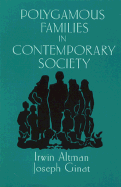Book contents
- Frontmatter
- Contents
- Foreword
- Preface and acknowledgments
- 1 Introduction
- Historical background
- 2 Mormon history, 1830–1890: The early years
- 3 Contemporary fundamentalist movements
- 4 The people and their communities
- Early stages of relationships
- Home environments of plural families
- Managing everyday life
- Social-emotional and family relationships
- Appendix A Methodology and procedure
- Appendix B Demographics of Mormon polygyny
- Notes
- References
- Index
2 - Mormon history, 1830–1890: The early years
Published online by Cambridge University Press: 05 May 2010
- Frontmatter
- Contents
- Foreword
- Preface and acknowledgments
- 1 Introduction
- Historical background
- 2 Mormon history, 1830–1890: The early years
- 3 Contemporary fundamentalist movements
- 4 The people and their communities
- Early stages of relationships
- Home environments of plural families
- Managing everyday life
- Social-emotional and family relationships
- Appendix A Methodology and procedure
- Appendix B Demographics of Mormon polygyny
- Notes
- References
- Index
Summary
The Mormon religion is relatively young, having been established only in 1830. Yet it has a rich and complicated history. One of several Christian religious movements arising in the United States in the 1800s, the Church of Jesus Christ of Latter-day Saints has grown and prospered over the years. Its present membership exceeds nine million, and Mormonism is now a worldwide religion with a large following in Canada, Mexico, and Latin America and growing numbers in Europe, Asia, and Africa. The international headquarters of the LDS Church is in Salt Lake City, Utah, and there are many members in Utah and surrounding states. There are also many Mormons in California and other western states.
The historical backdrop of the early 1800s
A host of factors contributed to the rise of religious movements in America in the early 1800s. In some respects, the era was similar to the 1960s and 1970s, which were turbulent years for America's established values and traditions. The divisiveness of the early 1800s resulted in many conservative countermovements, Mormonism among them, aimed at restoring “traditional values” and establishing greater stability in society.
Another striking feature of American and other Western societies of the late 1700s and early 1800s was a growing emphasis on individual autonomy and freedom (Coontz, 1988; Hawes and Nybakken, 1991; Kern, 1981; Rothman, 1984). More people embraced the idea of romantic love, sexual freedom, and the freedom to choose one's marital partner.
- Type
- Chapter
- Information
- Polygamous Families in Contemporary Society , pp. 21 - 42Publisher: Cambridge University PressPrint publication year: 1996

